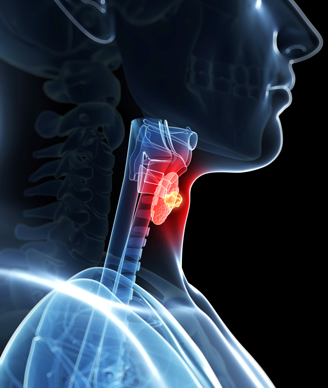Dental x-rays and the risk of thyroid cancer
The thyroid gland is highly susceptible to radiation carcinogenesis and exposure to high-dose ionising radiation, particularly in childhood and adolescence, is the only established environmental cause of thyroid cancer. Thyroid cancer after exposure to external radiation: A pooled analysis of seven studies. Sources and effects of ionizing radiation. Evidence for an association between exposure to high-dose ionising radiation and thyroid cancer has come from studies of children who had received x-ray treatment, for benign conditions such as enlarged tonsils or thymus gland, haemangioma, ringworm of the scalp (tinea capitis), skin disorders, and painful arthrosis and spondylosis of the cervical spine . Thyroid cancer after exposure to external radiation: A pooled analysis of seven studies. Thyroid cancer after X-ray treatment of benign disorders of the cervical spine in adults. Similar evidence has also come from radiation treatment of children with a range of malignancies, where the treatment field included the thyroid. Important additional evidence has come from the study of Japanese survivors of the American atomic bombs of 1945 and the Chernobyl nuclear power plant accident in 1986.
For the general population, medical diagnostic x-rays of the head and neck, particularly dental x-rays, are an important source of ionising radiation to the thyroid gland. The anatomic position and the relatively high radiosensitivity of the thyroid gland make it an organ of concern in dental radiography. Given the high lifetime prevalence and frequency of exposure to dental x-rays, even a small increase in thyroid cancer risk would be of considerable public health importance. At present, there is limited epidemiological data on thyroid cancer risk associated with low-dose radiation exposures from common diagnostic x-rays. Low-dose radiation has been associated with thyroid dysfunction such as thyroid autoimmunity among young females, thyroid cysts in females of all ages .
The incidence of thyroid cancer has increased in many countries over the past 30 or so years [22–24 Burgess JR. Temporal trends for thyroid carcinoma in Australia: An increasing incidence of papillary thyroid carcinoma (1982–1997). . Much of this increase is probably due to increased ascertainment of subclinical cases, but other contributing factors should be considered. In most populations, thyroid cancer accounts for approximately 1–6% of all cancers in females and <2% in males; the World age-standardised incidence rates (per 100 000 population) vary from about 1–23 in females and 0.5–6 in males.